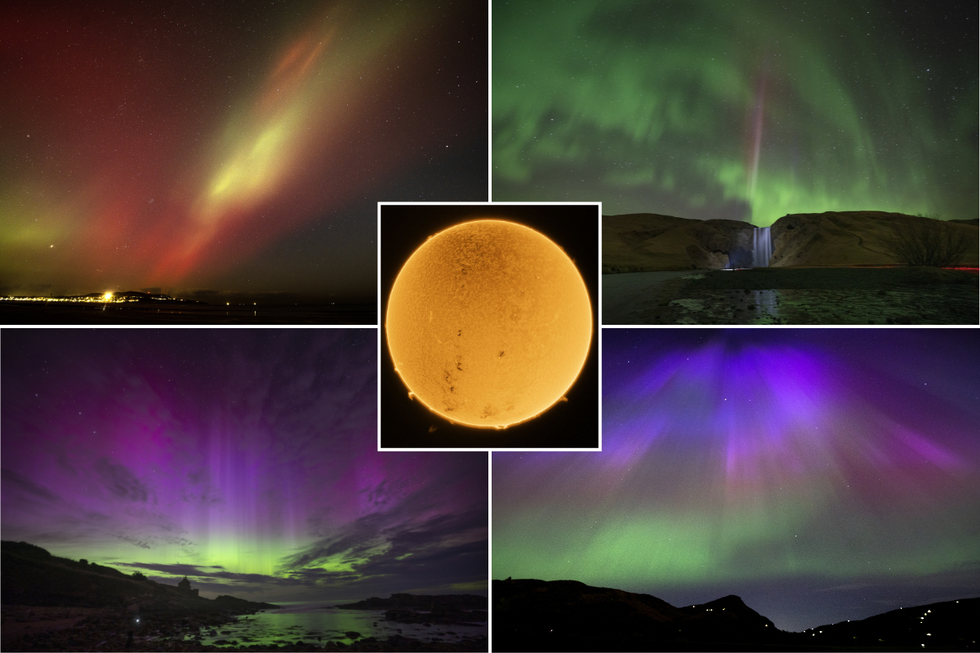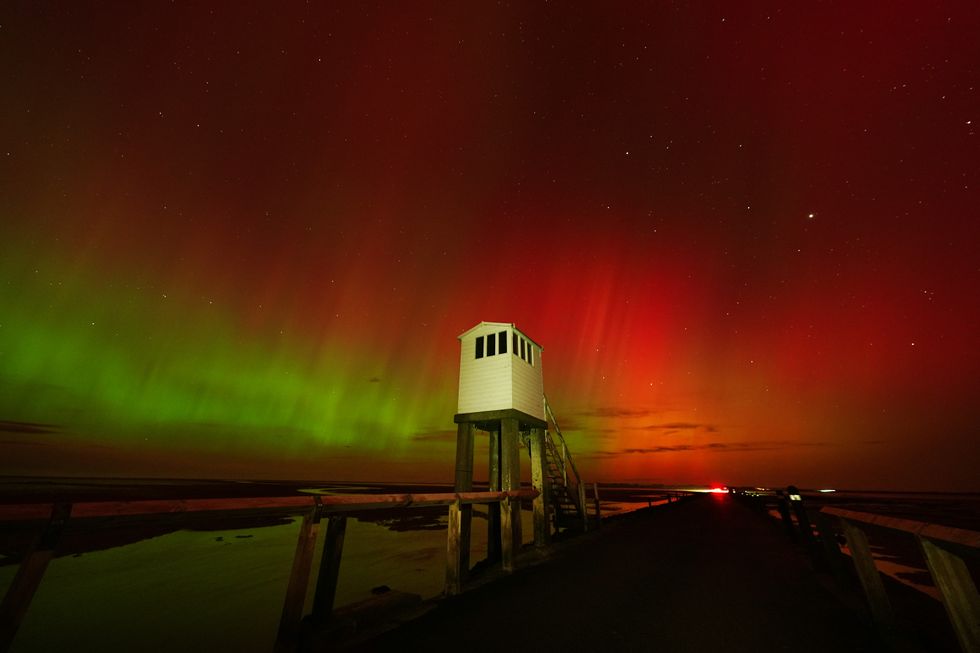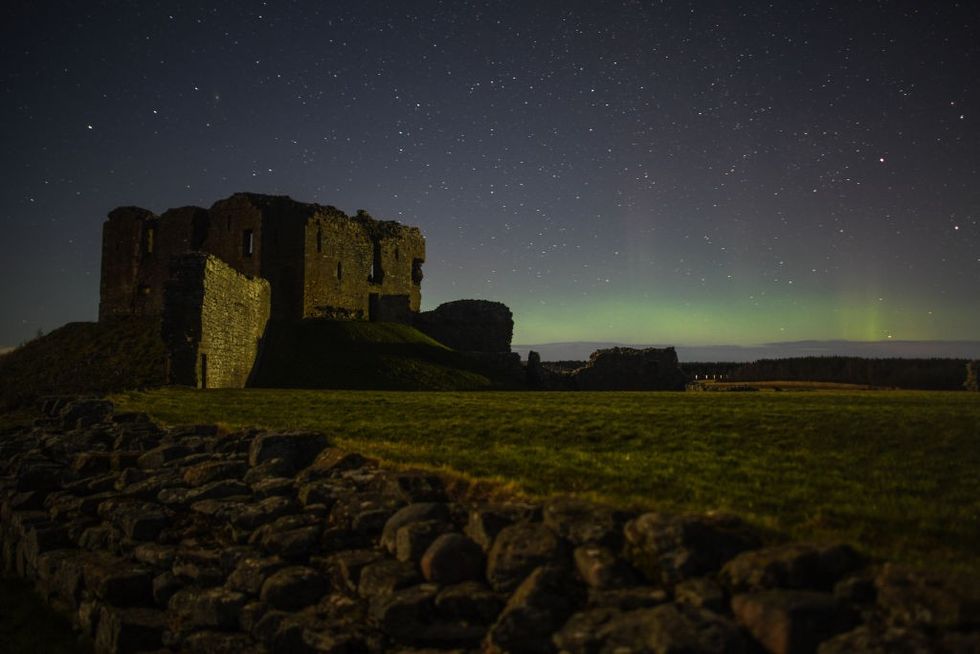George Bunn
Guest Reporter
The Met Office has said rare aurora are set to remain visible over the UK as part of an 11-year cycle.
Forecasters have said it is likely there will be further chances of aurora visibility in the UK in the coming months as the Sun has reached its solar maximum period.
NASA, the National Oceanic and Atmospheric Administration (NOAA) and the International Solar Cycle Prediction Panel confirmed that the Sun has reached its solar maximum period, which could continue for the next year.
It comes as the Sun goes through a natural cycle of transition between low and high magnetic activity. Roughly every 11 years, at the height of the solar cycle, the Sun’s magnetic poles flip, and the Sun transitions from being calm to an active and stormy state.

At solar maximum there is a peak in the number of sunspots which means there’s an ongoing chance of further space weather activity, and ultimately the potential for aurora visibility here on Earth.
Space Weather Manager Krista Hammond said: "We’re now in the solar maximum phase, which means there’s more frequent sunspots and solar activity in general.
"While it’s not possible to know precisely what this means for individual Earth-directed solar events, it does mean there will likely be further chances of aurora visibility in the UK in the coming months.
"While we’re in the solar maximum phase now, which could last a year, it’s not possible to know exactly when the number of sunspots peaked until some time after it has happened."
LATEST DEVELOPMENTS:

It comes after a series of solar flares and coronal mass ejections occurring in quick succession in May 2024 created the strongest geomagnetic storm on Earth in two decades.
After the solar maximum phase, activity on the surface of the Sun will gradually reduce in the coming years as it transitions to the solar minimum.
However, scientists said the transition doesn’t mean there won’t be Earth-directed space weather and the chance for further visible auroras at times.
Nasa is launching several missions over the next year that will help us better understand space weather and its impacts across the solar system.

Hammond continued: "While the total number of sunspots will start to reduce after solar maximum, we will continue to see space weather throughout the solar cycle, even as overall activity declines.
"Indeed, in some solar cycles, the larger events can happen as the Sun transitions back towards solar minimum.
"It’s our job to forecast these events in the coming months and years to minimise any potential disruption to satellite operations or some ground-based infrastructure."
Find Out More...
Forecasters have said it is likely there will be further chances of aurora visibility in the UK in the coming months as the Sun has reached its solar maximum period.
NASA, the National Oceanic and Atmospheric Administration (NOAA) and the International Solar Cycle Prediction Panel confirmed that the Sun has reached its solar maximum period, which could continue for the next year.
It comes as the Sun goes through a natural cycle of transition between low and high magnetic activity. Roughly every 11 years, at the height of the solar cycle, the Sun’s magnetic poles flip, and the Sun transitions from being calm to an active and stormy state.

At solar maximum there is a peak in the number of sunspots which means there’s an ongoing chance of further space weather activity, and ultimately the potential for aurora visibility here on Earth.
Space Weather Manager Krista Hammond said: "We’re now in the solar maximum phase, which means there’s more frequent sunspots and solar activity in general.
"While it’s not possible to know precisely what this means for individual Earth-directed solar events, it does mean there will likely be further chances of aurora visibility in the UK in the coming months.
"While we’re in the solar maximum phase now, which could last a year, it’s not possible to know exactly when the number of sunspots peaked until some time after it has happened."
LATEST DEVELOPMENTS:
- 'Halloween Comet' VAPORISED after flying too close to the sun
- ISS told to be evacuated immediately as astronauts could DIE amid major 'safety risk'
- Robots powered by insect brains could be used on Mars in new AI breakthrough

It comes after a series of solar flares and coronal mass ejections occurring in quick succession in May 2024 created the strongest geomagnetic storm on Earth in two decades.
After the solar maximum phase, activity on the surface of the Sun will gradually reduce in the coming years as it transitions to the solar minimum.
However, scientists said the transition doesn’t mean there won’t be Earth-directed space weather and the chance for further visible auroras at times.
Nasa is launching several missions over the next year that will help us better understand space weather and its impacts across the solar system.

Hammond continued: "While the total number of sunspots will start to reduce after solar maximum, we will continue to see space weather throughout the solar cycle, even as overall activity declines.
"Indeed, in some solar cycles, the larger events can happen as the Sun transitions back towards solar minimum.
"It’s our job to forecast these events in the coming months and years to minimise any potential disruption to satellite operations or some ground-based infrastructure."
Find Out More...
